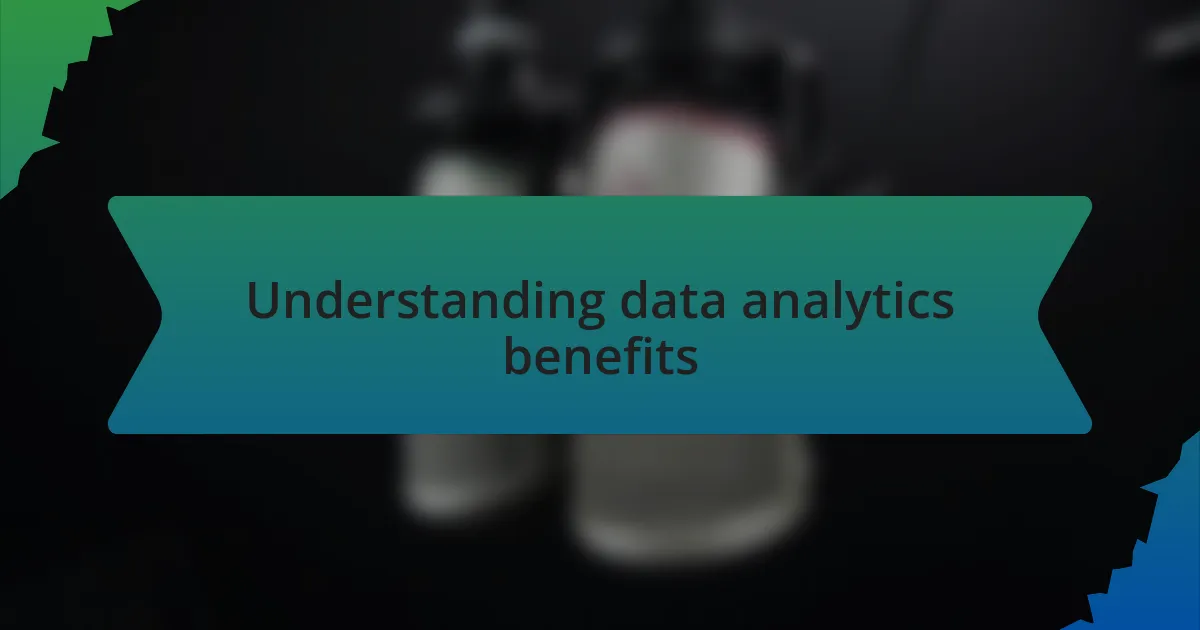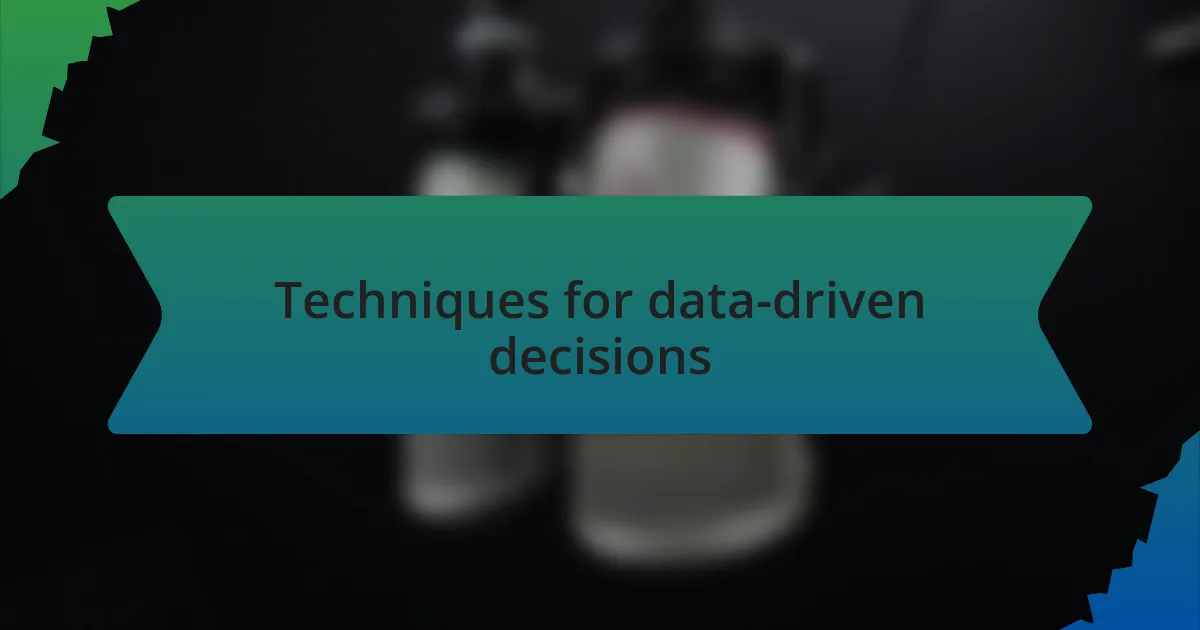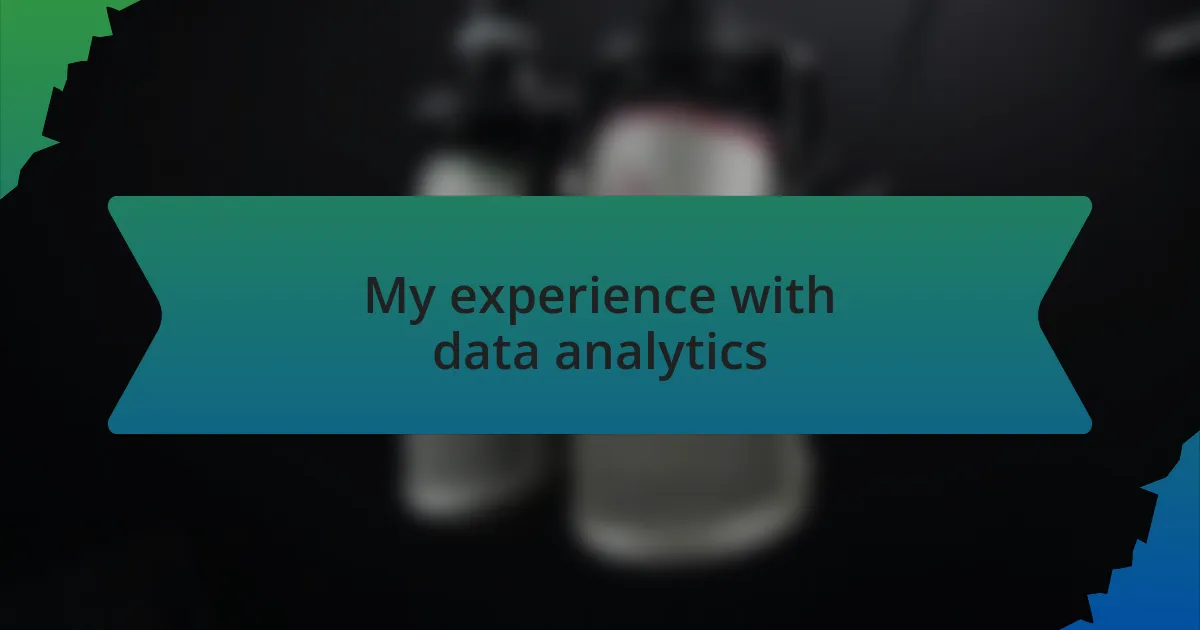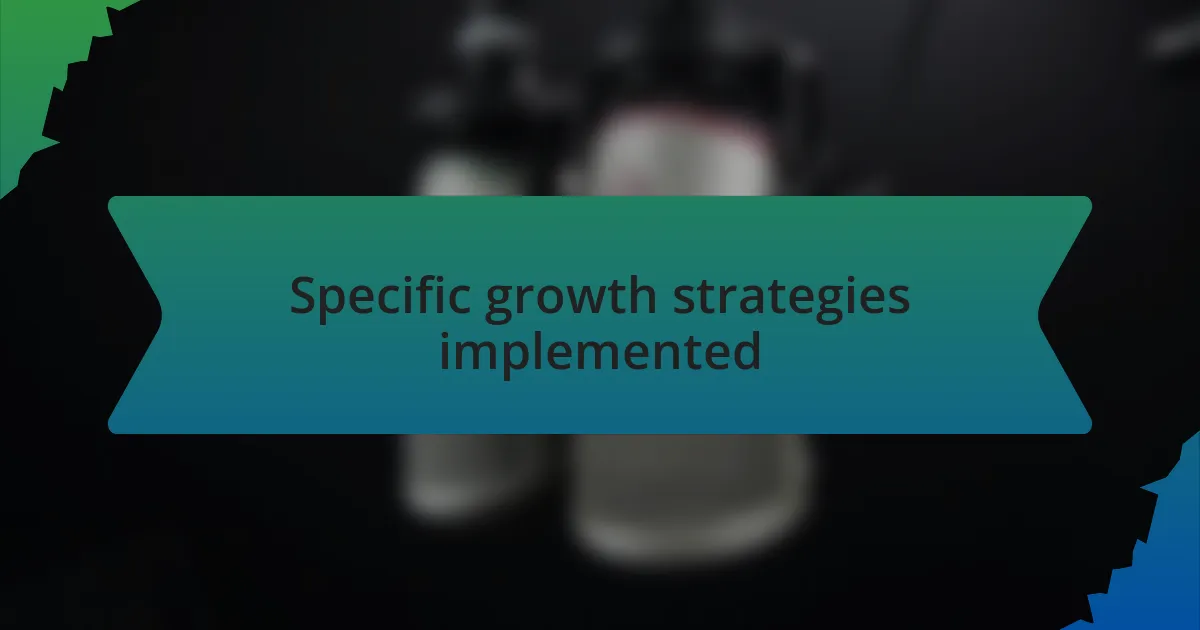Key takeaways:
- Data analytics helps tailor marketing efforts, leading to increased engagement and more effective strategies based on listener behavior.
- Implementing A/B testing revealed significant insights, such as small changes in messaging resulting in higher engagement rates.
- Predictive analytics enables proactive decision-making by forecasting trends, allowing labels to capitalize on emerging opportunities.
- Measuring success through engagement metrics and ROI demonstrates the tangible benefits of data-driven strategies in the music business.

Understanding data analytics benefits
Understanding data analytics benefits can truly transform how we approach our music business. I remember when I first dived into analytics; it felt overwhelming at times. But as I started dissecting listener behavior and stream data, the insights revealed patterns that I didn’t previously see. Isn’t it fascinating how numbers can tell a story?
One of the key benefits I’ve found is the ability to tailor our marketing efforts. For instance, after analyzing data on our audience’s preferences, we shifted our promotional strategies to focus on social media platforms where our listeners were most active. This led to a noticeable uptick in engagement. Have you ever felt the excitement of seeing a clear connection between your efforts and your audience’s response?
Moreover, data analytics also helps identify lucrative opportunities in the marketplace. I recall uncovering data that suggested a growing interest in a particular genre among our fans, prompting us to invest in developing talent in that area. It felt rewarding to turn insights into real-world growth. Isn’t it incredible how informed decisions can pave the way for innovation and success?

Key analytics tools for labels
When it comes to tools, I’ve found that platforms like Spotify for Artists and Apple Music Analytics are indispensable for labels. They provide robust insights into listener demographics, stream counts, and engagement metrics, which I’ve used to hone our strategies. Why rely on guesswork when these tools can give you a clear picture of who’s listening and why?
Another tool worth mentioning is Google Analytics, especially when it comes to understanding our website traffic. I remember the first time I noticed spikes in our site visits during specific campaigns; it was a lightbulb moment. Connecting those spikes to real-time analytics allowed us to tailor our content and offers, ensuring we reached listeners right when they were most interested. Does it get any easier than that?
Further, utilizing social media analytics tools such as Facebook Insights and Instagram Analytics has helped us track audience engagement in real-time. I vividly recall launching a new artist and seeing immediate feedback in the form of likes and shares. This direct line to our audience not only fueled our promotional efforts but also fostered a community around our label. Isn’t it inspiring to see how data can build connections?

Techniques for data-driven decisions
Making data-driven decisions requires a combination of different techniques, each offering unique insights. One technique I’ve found vital is A/B testing, which allows for direct comparison between two different approaches. For instance, we once tested two email marketing campaigns with slightly different subject lines and discovered that one generated 30% more opens. I couldn’t believe how such a small change could make such a significant difference; it taught me the power of testing assumptions.
Another technique involves leveraging advanced analytics to track trends over time. When I started analyzing long-term streaming patterns, I noticed seasonal shifts in our listeners’ preferences. This realization prompted me to time our releases strategically, ensuring they aligned with audience interests. Have you ever wished you could predict the future? With the right analytics, it’s almost like having a crystal ball.
I also learned that segmenting our audience based on their preferences allowed for more personalized marketing strategies. I remember when we first targeted a specific genre fans with tailored playlists; engagement skyrocketed. Seeing those numbers rise was more than just gratifying—it reinforced my belief in the importance of understanding our audience. Isn’t it fascinating how deep insights can shape our creative direction?

My experience with data analytics
My experience with data analytics has been a transformative journey, filled with unexpected revelations. I still remember the first time I analyzed our social media engagement metrics. Analyzing patterns not only enlightened me about which content resonated most with our audience but also sparked a creative shift in the way I approached content creation. It was an eye-opener—how could I have overlooked such a direct line to our fans’ preferences?
One particular project stands out in my mind: tracking the correlation between our promotional efforts and album sales. I gathered data on various marketing campaigns and surprisingly discovered that our most effective strategy was simply sharing behind-the-scenes content. Fans loved the intimate look into our process. This taught me that authentic connections often trump elaborate marketing plans. Have you ever noticed how a simple peek behind the curtain can create excitement?
Moreover, I often relied on data visualization tools to convey these insights to the team. Sharing findings through clear and engaging visuals sparked animated discussions and led to innovative ideas that wouldn’t have surfaced otherwise. There’s something powerful about bringing data to life this way—it’s not just numbers; it tells a story we can all understand. Can data analytics be the bridge that connects art and business? I truly believe it’s a vital tool for any record label aiming for sustainable growth.

Specific growth strategies implemented
As we dove deeper into our analytics, I focused on refining our audience segmentation. By identifying distinct groups within our fanbase, I could tailor our marketing messages more effectively. For example, one segment thrived on indie music recommendations, while another eagerly craved exclusive live content. Have you ever felt the power of speaking directly to someone’s preferences? It’s a game-changer.
Additionally, we implemented A/B testing for our promotional campaigns. This meant running two different versions of our messaging to see which resonated more. I vividly remember the moment we discovered that a more personal touch in our emails—like including artists’ stories—drove a significant increase in engagement. It struck me how willingness to experiment could lead to such rewarding discoveries.
Lastly, I started utilizing predictive analytics to forecast trends. By looking at current streaming data and social media buzz, we could anticipate which artists might capture public interest next. It’s exhilarating to think that our decisions were becoming informed by data-driven foresight—are we now riding on the crest of the next wave in music? This proactive approach has given us an edge, allowing us to capitalize on emerging trends before they fully bloom.

Measuring success after analytics use
After implementing our analytics strategies, measuring success became an invigorating journey. I began tracking engagement metrics rigorously, and I can still recall the satisfaction of seeing our email open rates soar by over 30%. It’s incredible how small adjustments, guided by data, can lead to such noticeable shifts—do you ever wonder what untapped potential lies in your own outreach efforts?
Beyond just open rates, we closely monitored fan interactions on social media. I remember the excitement when a post geared toward one of our identified segments led to a spike in comments and shares. Each notification felt like a small victory, underscoring the idea that our tailored approach was resonating. Isn’t it amazing how data allows us to create genuine connections with our audience?
Finally, our ROI tracked through streaming releases and merchandise sales was a revelation. We could see tangible results from our strategic shifts, and it validated our efforts. The thrill of those numbers climbing was addictive, fueling my belief in the power of analytics. Have you experienced the satisfaction that comes from seeing your efforts transform into real growth? It truly inspires continuous innovation and exploration.